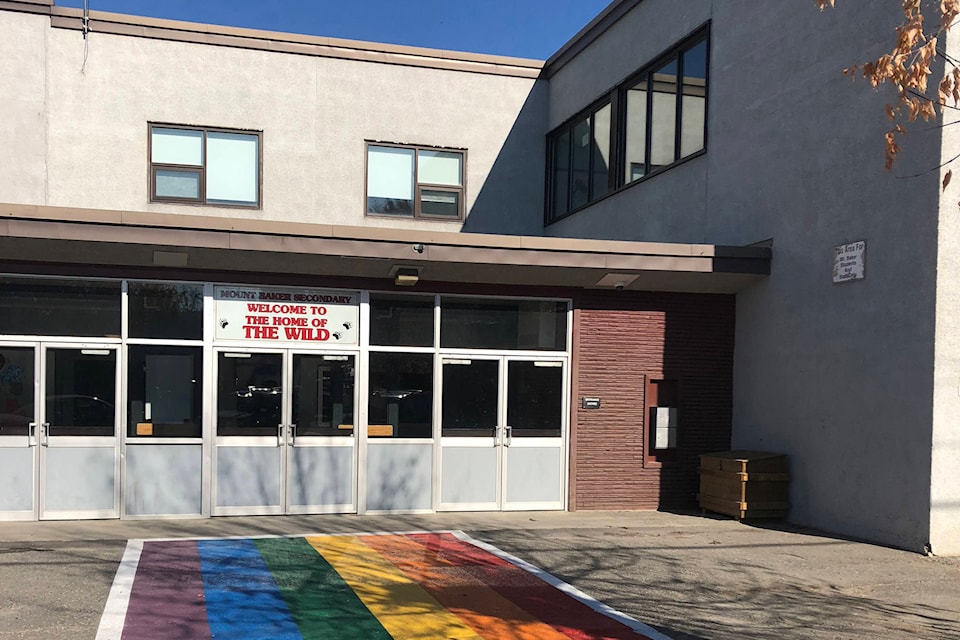The Southeast Kootenay School District has submitted a draft plan of school operations and protocols to the Ministry of Education ahead of the start of a new school semester in the COVID-19 era.
Silke Yardley, the superintendent of School District 5, said the plan has been submitted for approval, and that local schools are working within those protocols to create their own individual plans.
“These plans contain overarching district protocols as well as specifics for our individual schools,” wrote Yardley, in an update posted on the SD5 website. “We know there has been a lot of worry about how our plans will look. I can assure you that our working group, along with school staff, have been working very hard behind the scenes to create solid plans for bringing our students and staff back to school.”
The draft plan includes protocols and procedures previously announced by the provincial government, including learning groups for elementary, middle and secondary students that will remain together throughout a school term.
Further information is set to be released to parents on Wed. Aug, 26, and schools will release their own unique plans and protocols on the same day. Schools will also be sending out invites for a Q&A between Aug. 27 - Sept. 1 to answer any questions that parents may have.
Students will be organized into learning groups — elementary school students between K - Grade 6, as well as middle school students, will be organized into groups of up to 60, including staff. Secondary school students will have their timetables organized into groups of up to 120.
For elementary students, learning groups will be assigned entry and exit doors and specific recess times and outdoor play areas. Middle school students will have two core teachers, with elective teachers wearing personal protective equipment where appropriate. Secondary school students will have two blocks a day for a 10-week model.
In addition, the traditional start of the school semester will look a little different this year, based on rolling announcements from the provincial government.
Starting on Sept. 8, school staff will meet with a joint health and safety committee for guidance on updated protocols developed by the BC Centre for Disease Control and Dr. Bonnie Henry, the province’s top doctor.
Students will then return to classes for two days of orientation, starting on Sept. 10.
Masks will be required for staff and middle school and secondary school students in high traffic areas such as hallways, buses and anytime outside of the classroom where physical distancing is not possible. Students and staff will be provided with two masks. Elementary school students will not be required to wear masks.
Shelley Balfour, the president of the Cranbrook District Teachers’ Association, says local BC Teachers Federation (BCTF) members have been working with district staff, Canadian Union of Public Employees (CUPE) and a district parent advisory council to keep everyone safe when the schools reopen for the semester.
“There are so many different facets to the school community, so we are constantly updating, planning and scratching our heads on how things will look on a daily basis,” she said.
From a teacher’s perspective, Balfour added that planning for the cohort model has been difficult.
“For me personally, I find the cohort model difficult for planning because it seems more about contact tracing than it does about safety and what is best for students,” she said. “These same children who cannot be with each other in school, will play with each other at break times, after school and in extra curricular activities.”
On the provincial stage, Kootenay East MLA Tom Shypitka has been critical of the lack of clarity from the government over a back-to-school plan from the Ministry of Education.
In a recent interview with the Townsman, Shypitka said there is still uncertainty about what learning groups will look like and what it means for existing family and social ‘bubbles’ outside of the school’s COVID-19 protocols.
“How are those cohorts chosen?” Shypitka said. “Are they alphabetical or are they by subject? Is it by areas they live in the city, like postal code? I don’t know how that looks, nobody really knows.”
The issue hits home for Shypitka, who has two kids going into middle and secondary school.
Back in June, schools re-opened for a few weeks as the provincial government, along with district staff, teachers and students, navigated the challenges of in-class instruction in the midst of the COVID-19 pandemic.
However, Shypitka also lamented a $12 million cut to Independent Distributed Learning last spring, which provides online and home-based educational opportunities for public and private schooling options.
“I know there’s a lot of parents I talk to that say they don’t really feel safe sending their kids to school,” Shypitka said. “They may have folks in their family who have respiratory conditions or aged parents that live with them or grandparents that live in the household.
“So they don’t want to subject their kids to large cohorts that they perceive as unsafe.”
